- Turn on the computer that will be installed Ubuntu Server 10.10 and make sure the Ubuntu Server installation CD is 10:10 in the CD-ROM from the computer.
- Go to the BIOS settings of the computer to adjust the firt boot to directly read the CD-ROM by pressing F2 or Del or F12 (each a different computer). Settings window will then appear. Go to the tab Boot CD-ROM and slide it into the top. Then press F10 to exit and save settings.
- The computer will restart and return to boot . For this time the user does not press anything, let alone to a window that requires the user to select one of the languages that will be used to interface the Ubuntu Server 10.10 and not the language of the installation. On this occasion I use English .
- After selecting the language, the user will be forwarded to the main window display. Users are required to choose one of six options.Because here I will do the installation, so I chose the first option, the Install Ubuntu Server .
- The next window the user will be presented again at the language selection. But for the language to be selected at this stage is the language used for the installation process. Here I am still using English .
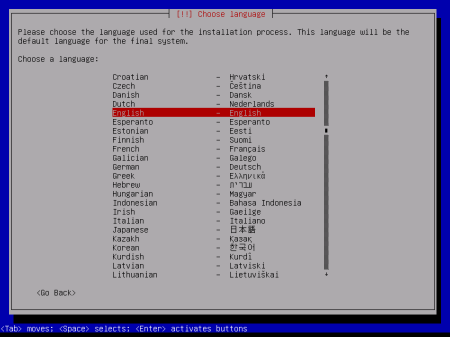
- The next step is to determine the state. At the beginning of the selection window display state, Indonesia there is no choice, so I choose Other and then selecting Asia and then choose Indonesia .
- The user will be asked whether to perform a test on the keyboard (keyboard) is used, I answer No , because I feel no need to do it.
- Still associated with the keyboard is used, the next step the user must specify the type of keyboard used. Average outstanding keyboard in Indonesia is the keyboard with a standard USA. For that i choose USA as the Origin of the Keyboard and Keyboard Layout .
- The next step is to determine the primary network interface . Because in this tutorial I am using two ethernet card that I plug in the computer, then the Ubuntu Server will ask where is the ethernet card to be primary . I choose eth0 is the primary ethernet card .
- After determining the primary network interface , Ubuntu Server will instantly find a DHCP ( Dynamic Host Configuration Protocol ) is connected to the network interface is Ubuntu Server. Because the Ubuntu Server not connected with any network, I press Cancel .
- Furthermore users are faced with determining the stage of the network configuration. I will configure the network at 10:10 after the completion of this Ubuntu Server installed, so I opted for this stage Do not configure the network at this time .
- The next process is to enter the name of the host from the server to be built this. Here I give the name of Server01 . Giving the name of the host does not justify the space.

- Furthermore the user is required to select the time zone ( time zone ) according to the user's city. Because in the previous step I had to choose Indonesia as my country, so here are four options: Jakarta, Pontianak, Makassar, Jayapura, and there is one choice worldwide Select from the list if the time zones do not appear appropriate. In this tutorial I chose Jakarta, because according to my time zone is located.

- Next step is to determine the method of providing partition your hard disk . In this tutorial I am using the Manual , because I want to determine its own partition.
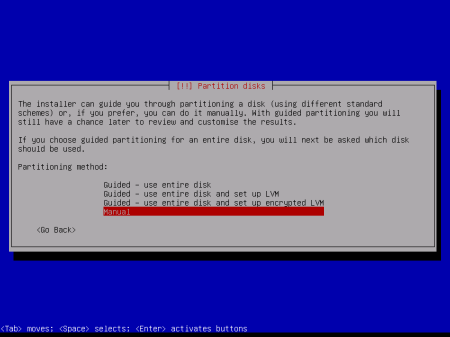
- The next process is to partition the hard disk , because previously I chose to manually partition. Select the hard disk to be partitioned or divided. In this tutorial hard disk that I use is known by the name of SCSI3 (0,0,0) (sda).
- Once selected it will display a dialog asking if the user would create a partition table that will use new or old. In this tutorial I chose Yes because I would make the partition table is new and delete old ones.
- The next stage is to partition the hard disk . In this step the user is required to create a new partition by selecting the hard disk that has been made empty partition table , and his status as FREE SPACE and not have a format. In the tutorial, it's the first time I will make the partition swap , where the partition is used to help the working RAM on your computer at any time if the RAM can not handle the work in progress.

- The next screen that appears is the question of what will be done by the user to free space is. Because the goal is to create a new partition, I chose to creat a new partition .
- After that the user is required to include the capacity of the partition to be created, namely the partition swap . In making the partition swap there is a formulation that can be used as a reference, ie if the RAM capacity of 1GB is smaller then the amount of swap is recommended is 2 x the amount of RAM, whereas if the RAM is greater than or equal to the number of partitions 1GB swap , it suggests the first x amount of RAM. However, this rule applies only to a relatively small RAM, if RAM is used is relatively large capacity, then the partition swap need not be large. On this occasion I was using 512MB of RAM, so the capacity of swap that I give is 1 GB.
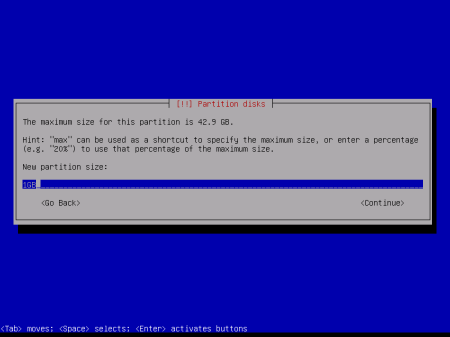
- Users will be asked again associated type and location of the partition. For the type I use Primary and for the location, I put in the position of Beginning .
- The next step is to partition the setting of the swap . On the Use as , I chose swap area partition because it is intended to swap . Select Done setting up the partition which indicates the setting swap has been completed.

- Next is to create a partition for the system. Step-by-step through almost the same as creating a partition swap starting from number 17, namely by selecting the partition with the status of FREE SPACE and not have a format file system , then select Create a new partition.
- Then provide the capacity to be used by the partition, because I want to use all the remaining partitions from the swap was (41.9 GB), then I just press the Enter key . As for the type and location are still the same as the swap , which is of type Primary and location of the Beginning .
- For setting the partition ( Partition settings ) things to do, namely: the Use as I use JFS journaling file system . On the label I put the SYSTEM . Label is used for naming, so it can be anything the user wants. Then select Done setting up the partition , which means setting the system partition is complete.

- Distribution of partitioning is almost complete. Next I choose Finish partitioning and write changes to disk to resolve the division of partitioning the hard disk . Ubuntu Server will show the summary of the division of the partition that has been done, in the view users will also be asked if you want to implement it into your hard disk , so that the hard disk can be used immediately I answered Yes and the basic system installation was performed.

- The user will then dihadapkah in the process of user and password .For the first one done is giving the full name of the user who will use the system. In this tutorial I put my name is Adam Kurniawan MRG .Enter the next user to be used as a user login . For this I put adamkurniawan . The next process to enter a password that will be used to log into the system twice. Ubuntu Server then asks if the user wants to perform encryption on direcorty home users. At practice, I answered No .
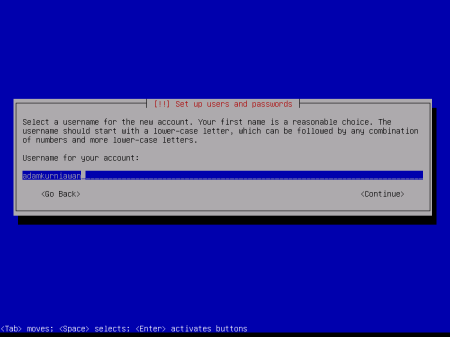
- The next process of Ubuntu Server will ask if the user wants to perform automatic updates using the internet or not. In this tutorial I chose No automatic update because I feel no need to do it.
- The next stage is to choose soft peragkat everything I want to be paired on the Ubuntu Server. By default Ubuntu Server 10:10 provides software that usually runs on the server . Software provided by Ubuntu Server are as follows: DNS server, LAMP server, Mail server, OpenSSH server, PostgreSQL database, print server, Samba file server, Tomcat Java server, and Virtual Machine host. For this tutorial in order to avoid loss dependecy , so I chose it, because if at any time any of the above software needed for purposes that are not expected, the administrator did not bother to install again.
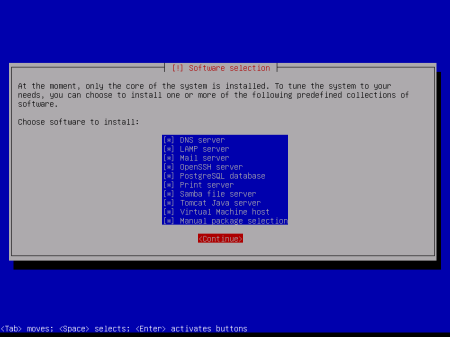
- After pressing Enter , the installation began. In the midst of the installation process the user will be prompted to enter a passwordfor MySQL as much as two times. Enter the password that is considered cool and safe. Still in the process of installing the software, return the user will be asked if you want to do konfgurasi Postfix or not. Postfix itself is a software used for the Mail server . On this occasion I choose No configuration . The installation process continues.

- After the software installation process is complete, users will again be prompted to choose whether the user wants to install the GRUB boot loader . In this tutorial I chose Yes .
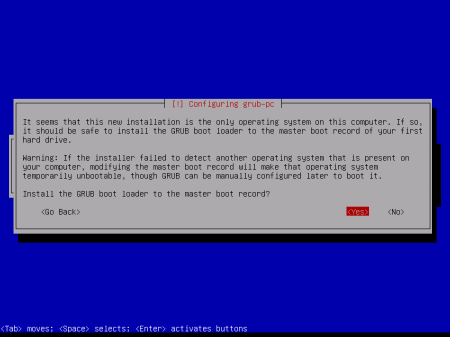
- After the Grub Loader finished installed, then it indicates that the installation of Ubuntu Server is completed. In addition it also signified by the emergence of a new look Finish the installation . SelectContinue , then the computer will restart , and do not forget to change back fisrboot it to your hard drive .
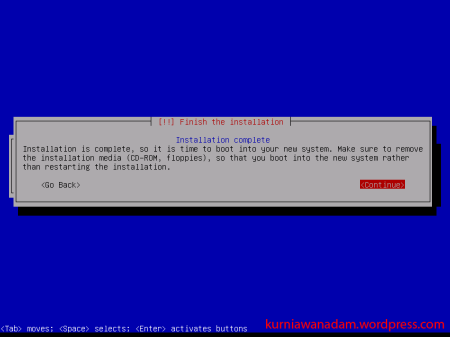
- After the first boot is changed to the hard drive and then after booting will instantly appear earlier than 10:10 Ubuntu Server that directly ask users to login to display CLI ( Command Line Interface ).

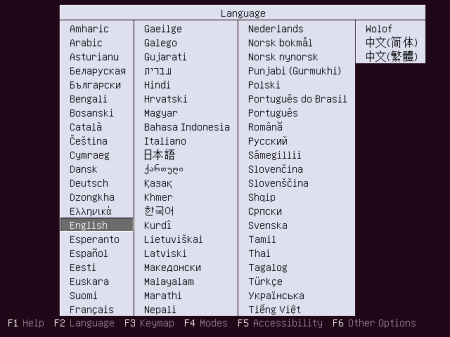
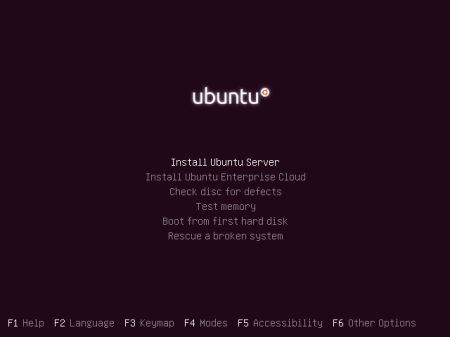


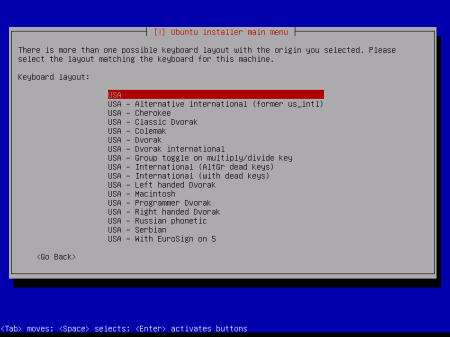


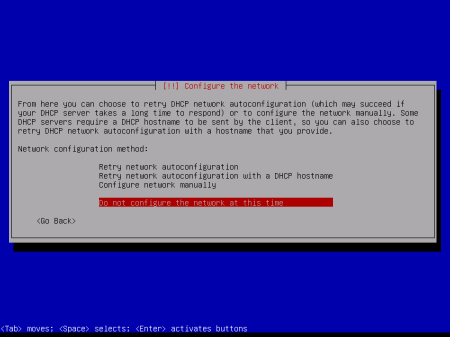













Tidak ada komentar:
Posting Komentar